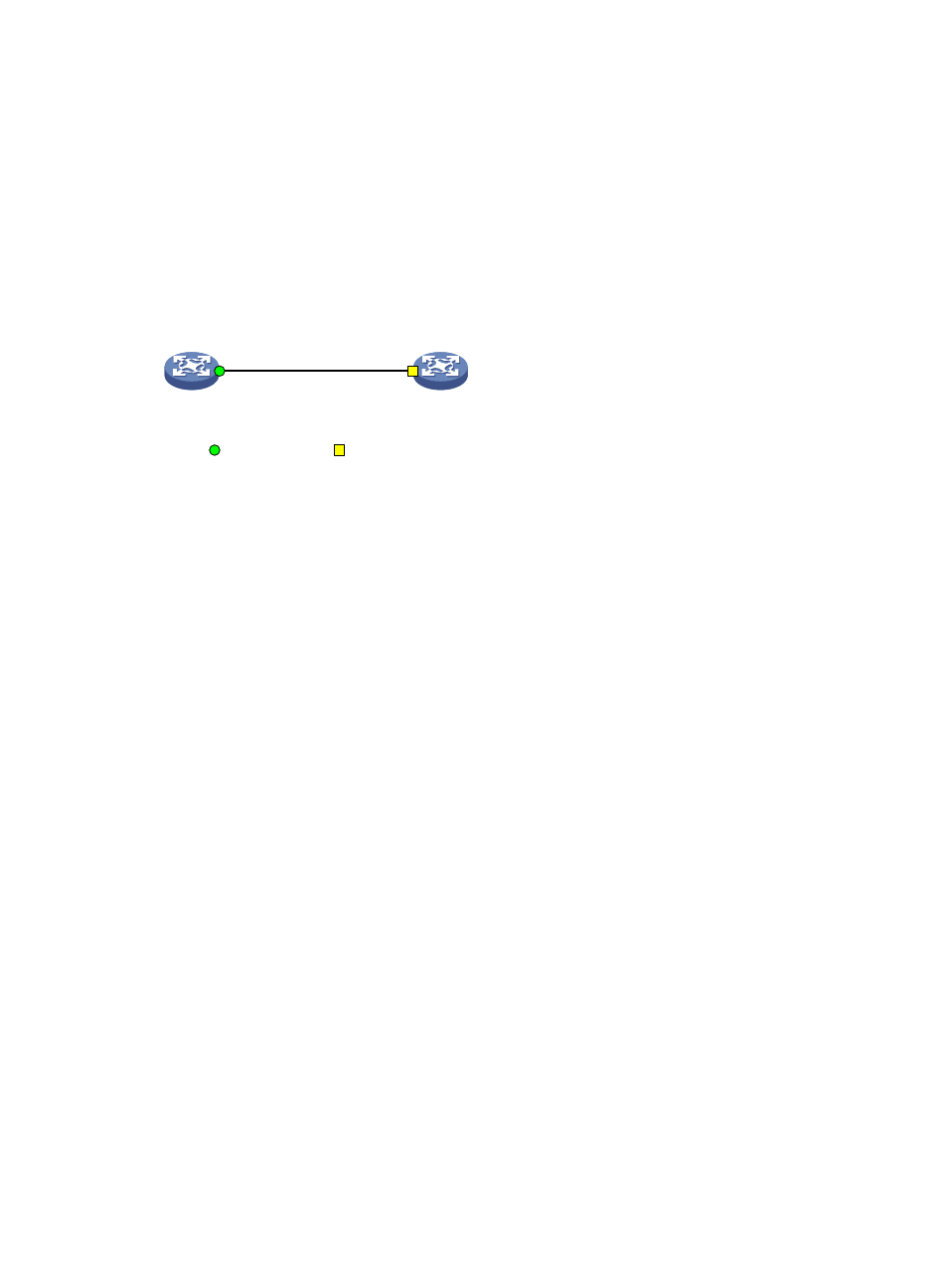Configuration example, Network requirements, Configuration procedure – H3C Technologies H3C S12500 Series Switches User Manual
Page 105: Configuring tc snooping

92
Configuration example
Network requirements
As shown in
•
Device A connects to Device B, a third-party device that has a different spanning tree
implementation. Both devices are in the same region.
•
Device B is the regional root bridge, and Device A is the downstream device.
Figure 27 No Agreement Check configuration
Configuration procedure
# Enable No Agreement Check on GigabitEthernet 4/0/1 of Device A.
<DeviceA> system-view
[DeviceA] interface gigabitethernet 4/0/1
[DeviceA-GigabitEthernet4/0/1] stp no-agreement-check
Configuring TC snooping
shows a topology change (TC) snooping application scenario. Device A and Device B are both
IRF-enabled switches and form an IRF fabric; they operate at the distribution layer and do not have any
spanning tree protocol enabled. The IRF fabric formed by Device A and Device B connect to multiple
access-layer customer networks, such as Customer 1 and Customer 2. Device C, Device D, and Device
E in customer network Customer 1 are all enabled with a spanning tree protocol. Customer 1 is
dual-uplinked to the IRF fabric for high availability. The IRF fabric transparently transmits STP BPDUs from
Customer 1 at Layer 2. Other customer networks (such as Customer 2) act the same as Customer 1.
GE4/0/1
Device A
Device B
GE4/0/1
Root port
Designated port
Root bridge